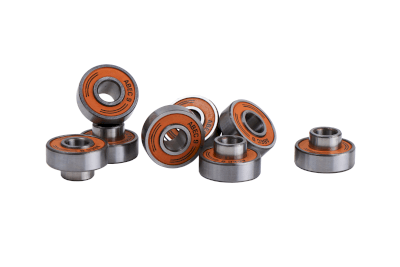What Is a Bearing Spacer?

A bearing spacer is a component used in conjunction with bearings to maintain the proper positioning and functionality of the bearings. Typically, bearings are used by inserting a shaft into their inner diameter and fixing the outer diameter to the housing, with the spacer playing a key role in this assembly.
Spacers are employed to fix the shaft in the axial direction. They are available in two types: one for the inner ring and another for the outer ring of the bearing. Each spacer type has a simple cylindrical shape and can be sourced either from the bearing manufacturer or another supplier.
Uses of Bearing Spacers
Bearing spacers are used alongside components like bearing holding pins to securely hold the width of the inner or outer ring of a bearing. Their primary function is not to hold the bearing in place alone but to assist in conjunction with other fixing components. For example, when using a ball bearing with a bearing retainer pin and a spacer, the spacer is aligned and tightened with the bearing and pin to ensure proper positioning and function.
Principle of Bearing Spacers
Bearing spacers have a straightforward cylindrical design. The inner diameter of the inner ring spacer matches the inner diameter of the bearing, while the outer diameter of the outer ring spacer aligns with the bearing’s outer diameter. This design allows the spacer to support the bearing without interfering with the shaft or housing.
These spacers are dimensionally tailored to the specific bearings they are used with and do not affect the lubrication within the bearing. In more demanding operating environments and conditions, bearing manufacturers may design custom spacers specifically for their bearings.
Using spacers enables the mounting of bearings without requiring special machining on the shaft or housing. This can be particularly useful in applications where bearings are mounted on flat plates with only tapped holes and holding pins, allowing for smooth bearing rotation while maintaining proper axial positioning.